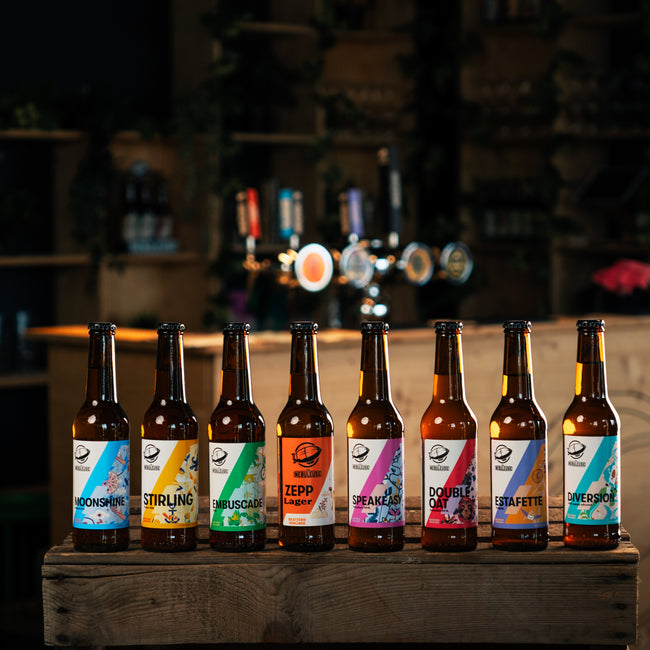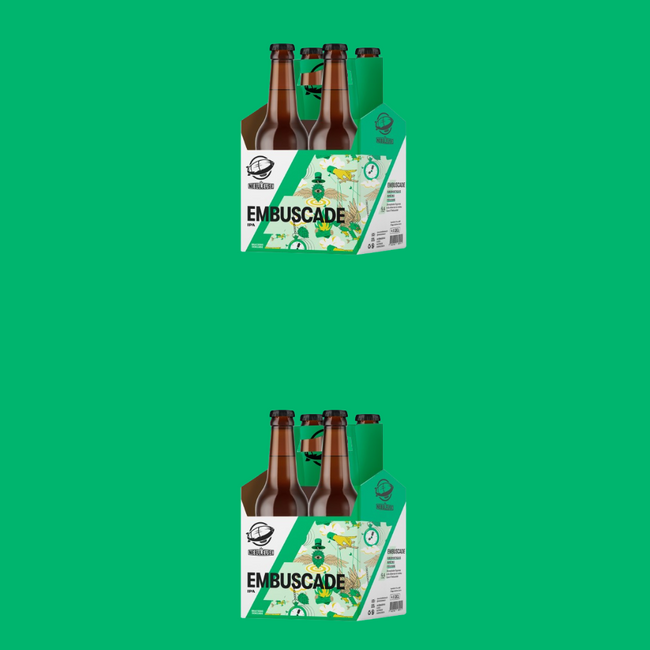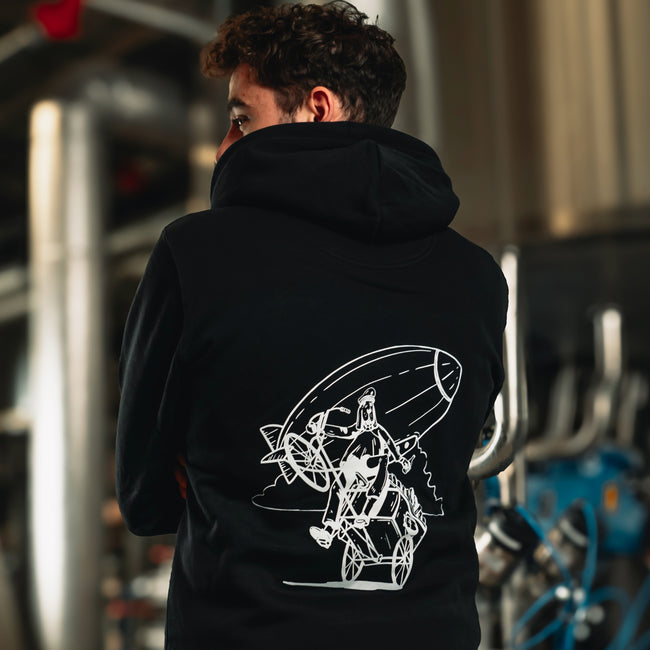The great beer styles, between tradition and innovation

What do a medieval monk brewing his Belgian Dubbel, a Bavarian worker enjoying his Helles after work, and a bearded hipster sipping his exotic fruit NEIPA have in common? Beyond the centuries and mustaches that separate them, these three characters share a common passion: beer , this human creation that has never stopped reinventing itself for 10,000 years.
The world of beer styles is a bit like the Marvel Universe—a multitude of colorful characters, each with their own epic origin story, flavorful superpowers, and loyal following. But unlike the comics, no one has ever truly written the definitive bible of brewing styles. They've emerged, evolved, disappeared, and then resurrected based on changing climates, available ingredients, technical advances, and the sheer creative whims of adventurous brewers. How do you navigate it all? Luckily, there are ways to recognize beer styles at a glance .
While some purists like to categorize beers into boxes as watertight as the walls of a fermenter, the reality on the ground is much more fluid , like the perfect foam of a properly served beer. Styles are hybridizing, reinventing themselves, colliding. Yesterday's tradition becomes today's experiment, which may become tomorrow's classic.
The origins of the great beer families - a journey through space and time
The Three Dynasties of Fermentation
If politics has its monarchies, dictatorships, and republics, beer has its three great fermentation dynasties: top, bottom, and spontaneous. This fundamental trinity is the matrix from which all the styles we know today have emerged.
Top fermentation is the eldest of the family , the original matriarch. Its yeasts, working at room temperature (15-25°C) and rising to the surface during fermentation, accompanied humanity long before anyone understood what yeast was. British Ales, Belgian saisons, German Hefeweizen—all these different branches of the family tree share this same common ancestor.
Bottom fermentation is the revolutionary younger brother , which appeared in the 19th century when some Bavarian brewers discovered that certain yeasts worked better in cooler conditions (7-12°C) and settled at the bottom of the vats. Lagers, pilsners and other bocks are the children of this technical revolution. Clearer, "cleaner" on the palate, these beers have conquered the world thanks to their accessible profile and increased stability.
As for spontaneous fermentation , it's the mystical and eccentric cousin of the family. Neither seeded nor controlled, it lets local wild yeasts and bacteria join the party. Belgian lambics and gueuzes, with their tangy and sometimes funky notes, represent perhaps the oldest form of brewing, but also the riskiest and most tied to its terroir.
When the climate dictates the beer in your glass
Nothing illustrates the influence of climate on beer styles better than the invisible line that divides brewing Europe. To the north, the kingdom of Ales (top fermentation); to the south, the empire of Lagers (bottom fermentation). A line that seems absurd until you realize that average temperature has historically dictated this boundary.
In northern regions like England, where summers remain moderate, top-fermenting yeasts thrived naturally. Local brewers turned this constraint into an opportunity, developing rich and complex ales, from deep, roasted stouts to balanced bitters, including the legendary original IPAs.
Further south, in regions where summer can turn a cellar into a sauna, spontaneous fermentation gave rise to Belgian lambics and their cousins. These beers accepted—and even celebrated—local microbial intervention, transforming what might be seen as contamination into a distinctive regional signature. Think of it as a microbial photobomb that, instead of ruining the photo, makes it infinitely more interesting.
Germany played a pivotal role in this brewing geography, becoming the cradle of bottom fermentation thanks to its many naturally cool cellars and innovative cooling systems.
The Great Upheaval - Industrialization, Globalization and Standardization
When Lager Conquered the World (and Almost Killed Diversity)
If you had asked for "a beer" anywhere in the world in the mid-20th century, chances are you would have been served a pale, light, and not very bitter lager. This style, once just one of hundreds of regional variations, has now achieved a remarkably effective global coup.
This conquest was no accident. The Industrial Revolution transformed brewing from a local craft to standardized mass production. Industrial lagers had all the makings to dominate this new paradigm: an accessible flavor profile, seductive clarity, superior stability, and the ability to be produced in colossal quantities. It was a bit like a fast-food restaurant selling beer—standardized, predictable, and ubiquitous.
The expansion of colonial empires then spread this model to the four corners of the globe. From Melbourne to Mexico City, from Cape Town to Shanghai, industrial breweries sprang up like mushrooms, all producing local versions of the same style.
The result? A massive erasure of brewing diversity. Hundreds of regional styles have disappeared, unable to resist standardization. Today's craft lagers, like La Nébuleuse's Zepp , are attempting to reinterpret this style by giving it character and personality , far from industrial uniformity.
Islands of Resistance - How Some Styles Survived
Fortunately, this uniformizing wave didn't sweep everything away. Some regions kept their brewing traditions alive, forming pockets of resistance that would later serve as inspiration for the craft movement.
Belgium , a small country at the crossroads of Germanic and Latin influences, has miraculously preserved an incredible diversity of styles. Trappist beers, lambics, saisons, witbiers—all traditions that have survived thanks to a blend of national pride, strong regional identity, and a deep connection between these beers and local culture.
Germany has maintained its heritage thanks to the famous Reinheitsgebot, a purity law dating from 1516 which, while limiting the permitted ingredients, paradoxically protected certain regional traditions against industrial homogenization.
Britain , despite massive industrialization, has seen its traditional pubs defend the heritage of cask-served real ales. The CAMRA (Campaign for Real Ale) movement, founded in 1971, played a crucial role in preventing the complete extinction of British bitters, milds, and other stouts.
These bastions of diversity, jealously preserving their specific traditions, would later become the guiding beacons of the 21st century craft renaissance.
The craft renaissance - rediscovery and reinvention of traditional styles
The American Revolution and its global shockwave
Like many revolutions, the craft beer revolution began with an act of rebellion. In the 1970s, as industrial standardization reached its peak, a few American pioneers decided to swim against the tide. Fritz Maytag saved Anchor Brewery, Jack McAuliffe founded New Albion, Ken Grossman launched Sierra Nevada... These visionaries sowed the seeds of a global brewing renaissance.
The fundamental innovation of the American craft beer movement? Cultural hybridization. By drawing on the world's brewing heritage while freeing themselves from traditional constraints, these new brewers reinvented forgotten styles and created new ones. The American Pale Ale, a hoppy reinterpretation of English bitters, and its big brother, the American IPA, a muscular reinterpretation of the British colonial style, have become emblems of this approach.
Starting in the 1990s, the movement went global, creating a fascinating paradox: a global trend that celebrates the local. From Stockholm to Santiago, from Melbourne to Montreal, microbreweries sprang up, each adapting the craft philosophy to its own cultural and geographical context. This time, unlike the industrial wave, globalization led to diversification rather than standardization.
Raising the Dead - When Forgotten Styles Come Back to Life
The Library of Alexandria of beer may have burned, but craft brewers have become taste archaeologists to resurrect its treasures. This brewing archaeology has allowed the rediscovery and reinterpretation of styles that industrialization had all but erased.
Wheat beer, almost extinct in the 1950s, has undergone a spectacular renaissance. This Belgian creation made with raw wheat, sometimes spiced with coriander and citrus zest, was virtually extinct until Pierre Celis, a former milkman turned brewer, revived it with his Hoegaarden. Today, it's a global style, reinterpreted by countless craft breweries. La Nébuleuse's Moonshine is part of this tradition , offering a contemporary reinterpretation of this ancestral style.
Porters and Stouts, relegated to the status of British regional curiosities, have also enjoyed a new lease of life thanks to the craft movement. These dark beers, once a popular drink among London workers, have been reinvented in a thousand variations: Imperial Stout, Coffee Stout, Oatmeal Stout, Baltic Porter... A veritable resurrection that would make Lazare look like an amateur.
Technical innovation at the service of brewing creativity
While early craft brewers were often tinkerers, the movement's maturity has brought a technical sophistication that now allows for taste feats unimaginable just a few decades ago.
Dry hopping , an age-old technique revived and perfected, revolutionized the aromatic expression of hops. By adding hops after fermentation rather than during the boil, brewers discovered they could extract incredibly expressive aromas without adding excessive bitterness. This technique was the catalyst for the IPA revolution , enabling the bursts of citrus, tropical fruit, and resin that characterize modern versions of the style.
Precise control of fermentation temperatures , once approximate, has become an exact science. This mastery now allows brewers to precisely sculpt the profile of esters and phenols produced by yeast, creating distinctive and reproducible flavor signatures.
The era of hybridization and creative experimentation
When the boundaries between styles fade
If the decades 1980-2000 were marked by the rediscovery of traditional styles, the 2010s saw the emergence of an even more daring trend: the deliberate hybridization of styles. Brewers, having mastered the fundamentals, began to play with established codes, blurring the boundaries between previously well-defined categories.
The Black IPA (or Cascadian Dark Ale) is the perfect example: a style that combines the hoppy intensity of an IPA with the dark color and roasted notes of a stout. This bottled oxymoron defies traditional classifications and exemplifies this new approach, which combines characteristics once considered incompatible.
Session IPAs , like La Nébuleuse's Speakeasy , represent another form of successful hybridization. This style reconciles the hoppy aromatic intensity of IPAs with the lightness and drinkability of traditional thirst-quenching beers. An apparent contradiction resolved by the technical creativity of modern brewers.
The influence of other alcoholic traditions
One of the most fascinating developments in recent years is the growing dialogue between the world of beer and other alcoholic traditions. The boundaries between once watertight categories are becoming increasingly porous.
THE Barrel aging of spirits, once experimental, has become common practice. From Imperial Stouts spending months in bourbon barrels to Tripels aged in cognac barrels, these creations borrow some of the spirits' characteristic notes, creating complex and unique flavor profiles.
Even more surprisingly, the influence of wine is increasingly felt. Wild, tangy beers aged in white or red wine barrels, sometimes with the addition of fruit, create flavor bridges between these two worlds.
This trend also extends to spice creations that erase traditional boundaries to offer new sensory experiences. Similarly, Contemporary amber profiles perfectly illustrate this search for new balances and aromatic complexity that craft brewers are pursuing.
The new geographies of brewing
The map of the brewing world has been profoundly redrawn by the craft revolution. While Europe and North America remain the driving forces, new regions are emerging as hubs of innovation and creative interpretation.
Oceania , with Australia and New Zealand leading the way, has developed its own brewing identity, largely influenced by its unique hop varieties with tropical fruit and white wine notes.
Latin America is experiencing a remarkable brewing boom, with countries like Brazil and Mexico developing vibrant craft scenes. These regions bring new perspectives, often influenced by their local ingredients.
Asia , and Japan in particular, has emerged as a territory of meticulous experimentation. Japanese brewers, known for their obsessive precision, have brought a new dimension of technical refinement to Western styles.
Scandinavia has emerged as a hotbed of radical innovation, with breweries pushing the boundaries of established definitions. Nordic brewers are often at the forefront of new trends.
The contemporary panorama and the trends shaping the future
The Age of Creative Paradoxes
The current brewing landscape is crisscrossed by seemingly contradictory currents that, nonetheless, coexist and enrich one another. These creative tensions define current developments and outline the contours of the near future.
First paradox: technical sophistication versus a return to basics. On the one hand, brewers have increasingly precise equipment, advanced laboratory analyses, and computer modeling of recipes. On the other, we are witnessing a renewed interest in ancestral techniques, pre-industrial artisanal methods. This productive tension is pushing creators to combine cutting-edge science with artisanal intuition.
The second fertile contradiction: the internationalization of styles versus the expression of local terroir. Brewers draw inspiration from global traditions while seeking to express their own identity, rooted in their region. La Nébuleuse's Double Oat perfectly illustrates this duality: a Double IPA, an American-inspired style, but with a unique interpretation that reflects the Swiss sensibility for balance and finesse.
Third paradox: the race for innovation versus the quest for authenticity. The market pushes for constant novelty, limited editions, and ever more daring experiments. At the same time, we're seeing a revaluation of well-executed classics, timeless recipes mastered to perfection.
The major current trends that are shaping tomorrow
Certain current trends seem destined to have a lasting impact on the beer style landscape, well beyond a simple fashion effect:
The "low & no" movement —low-alcohol or alcohol-free beers—represents much more than a response to health concerns. These creations are becoming stylistic exercises in their own right, with brewers seeking to maintain complexity and character despite the absence of alcohol. La Nébuleuse's Diversion range exemplifies this approach: alcohol-free beers that don't sacrifice personality and aromatic expressiveness. It's a bit like asking a Michelin-starred chef to create a gourmet menu without using salt—a constraint that forces a complete rethinking of flavor balances.
The integration of unconventional ingredients —fruits, spices, teas, coffees, but also vegetables, mushrooms, and algae—continues to push the boundaries of what's possible. Beyond the element of surprise, the best examples of this trend manage to create unexpected harmonies, opening up new taste territories.
A growing focus on sustainability is also influencing emerging styles, with renewed interest in local ingredients, less resource-intensive alternative grains, and low-impact production methods.
Seasonality also plays an important role in the evolution of contemporary styles, as evidenced by winter beers , with their richer, often spicy and comforting profiles.
Beyond Labels - The Future of Brewing Styles
After this journey through the history and geography of beer styles, one might ask: what does the future hold? Are we heading towards infinite fragmentation or a return to basics? The answer likely lies in a dynamic balance between these two poles.
Traditional classifications won't disappear—they serve as a compass in the bustling sea of brewing creations. But they will continue to evolve, enriched with new categories as certain innovations gain lasting traction. Styles aren't fossils frozen in amber, but living organisms that mutate and adapt.
Growing consumer expertise also plays a crucial role in this evolution. Contemporary drinkers, more curious and educated than ever, look beyond labels. They are interested in processes, ingredients, and creative intentions. This sophisticated demand is pushing brewers to continually rethink their approach to established styles.
For breweries like La Nébuleuse, this context represents a formidable creative playground. Neither prisoners of convention nor slaves to novelty at all costs, they navigate between respect for tradition and bold innovation, between technical precision and artisanal intuition. Their creations—whether they reinterpret a classic style like the Zepp or explore hybrid territories with the Double Oat – are helping to write the next chapter in this thousand-year-old brewing story.
Because beyond taxonomies and labels, the very essence of craft beer lies in this creative tension between roots and wings, between the humble recognition of what has come before us and the joyful audacity to imagine what does not yet exist. Each glass tells this story in perpetual evolution—a story of which we, brewers and amateurs, are all passionate co-authors.
The next time you enjoy a craft beer, take a moment to appreciate what it represents. There's more to your glass than just malt, hops, water, and yeast—it's a chapter in the great adventure of beer styles that continues to unfold before our eyes. Here's to yours, and to the next brew that pushes the boundaries of what's possible again!









